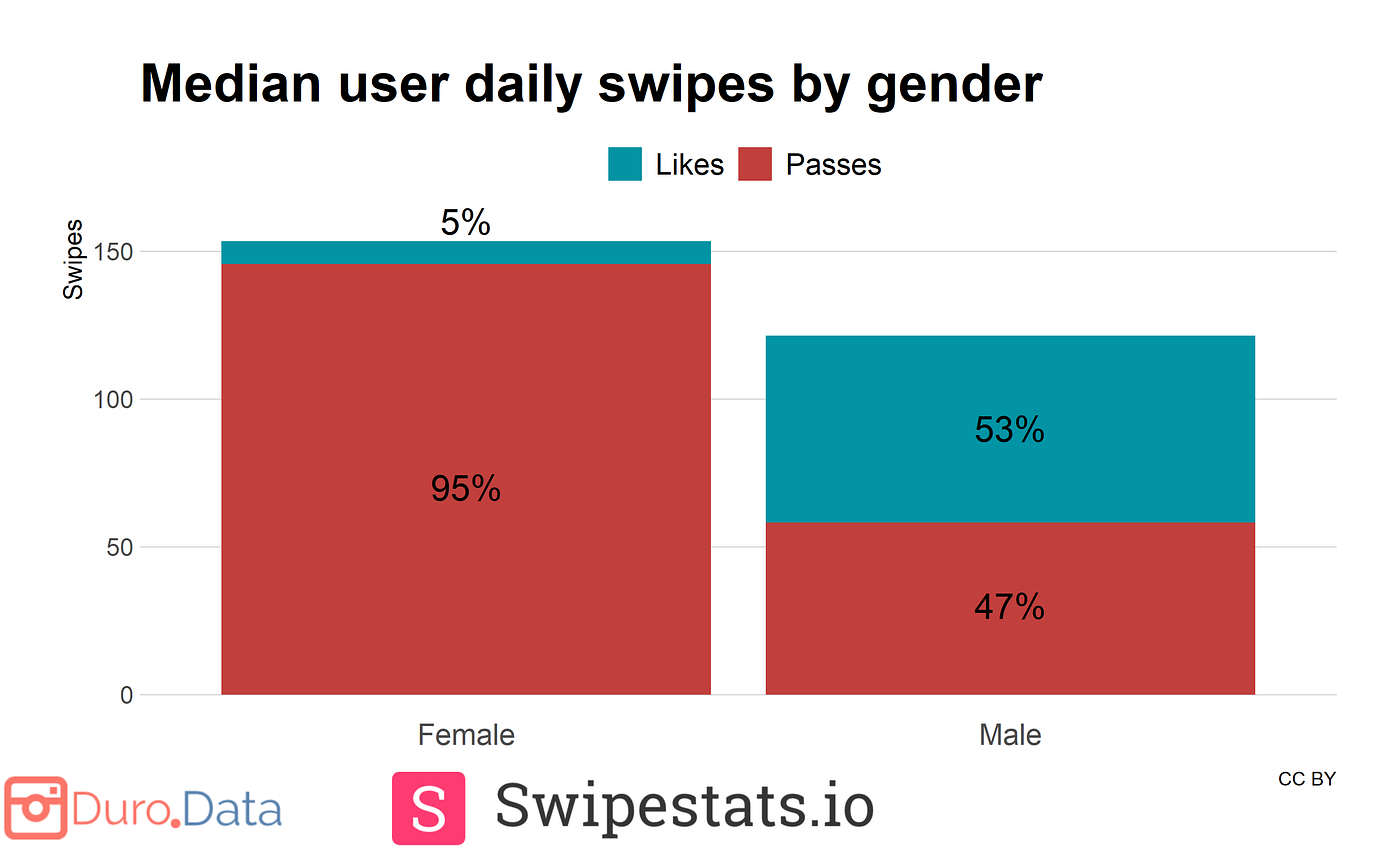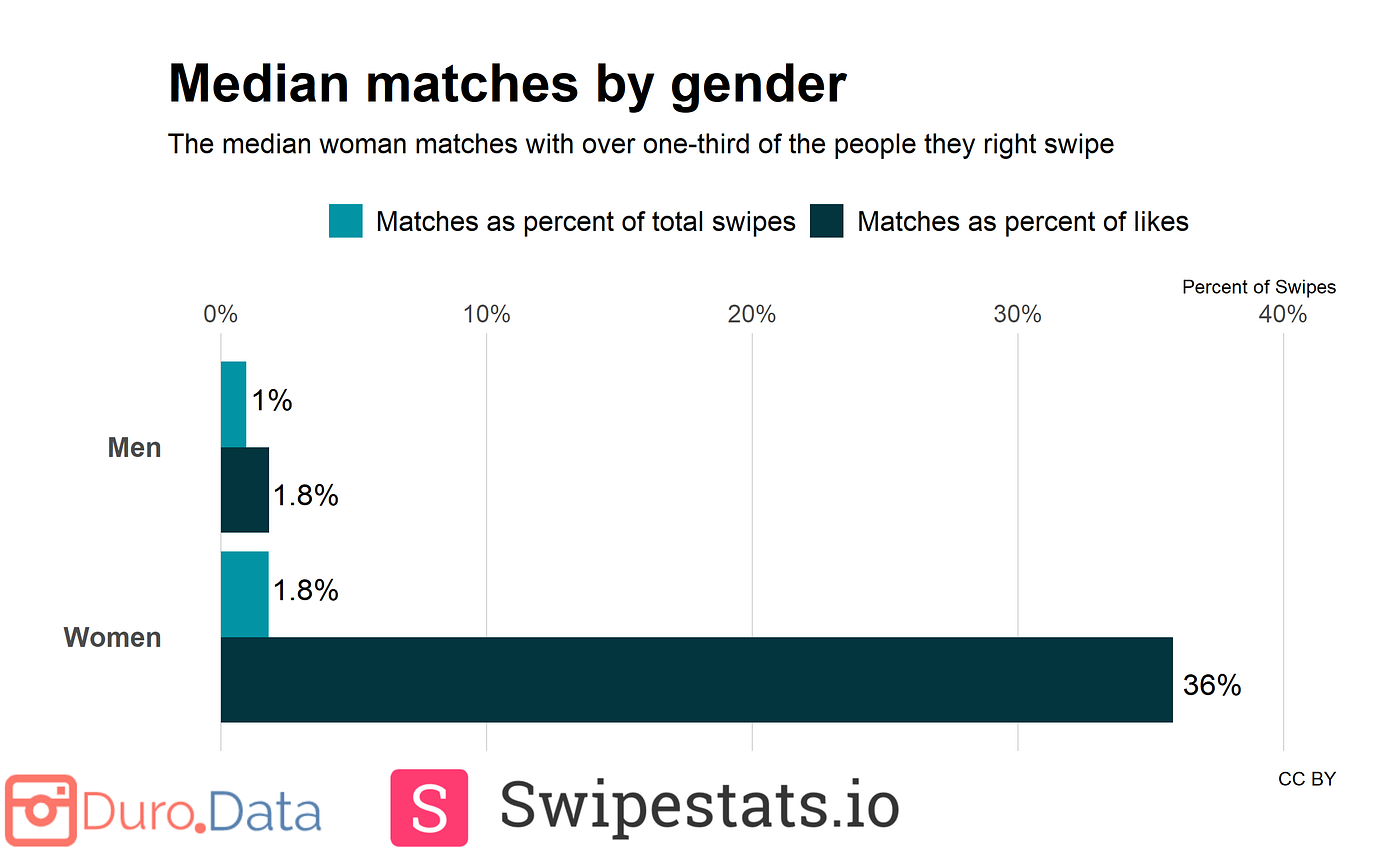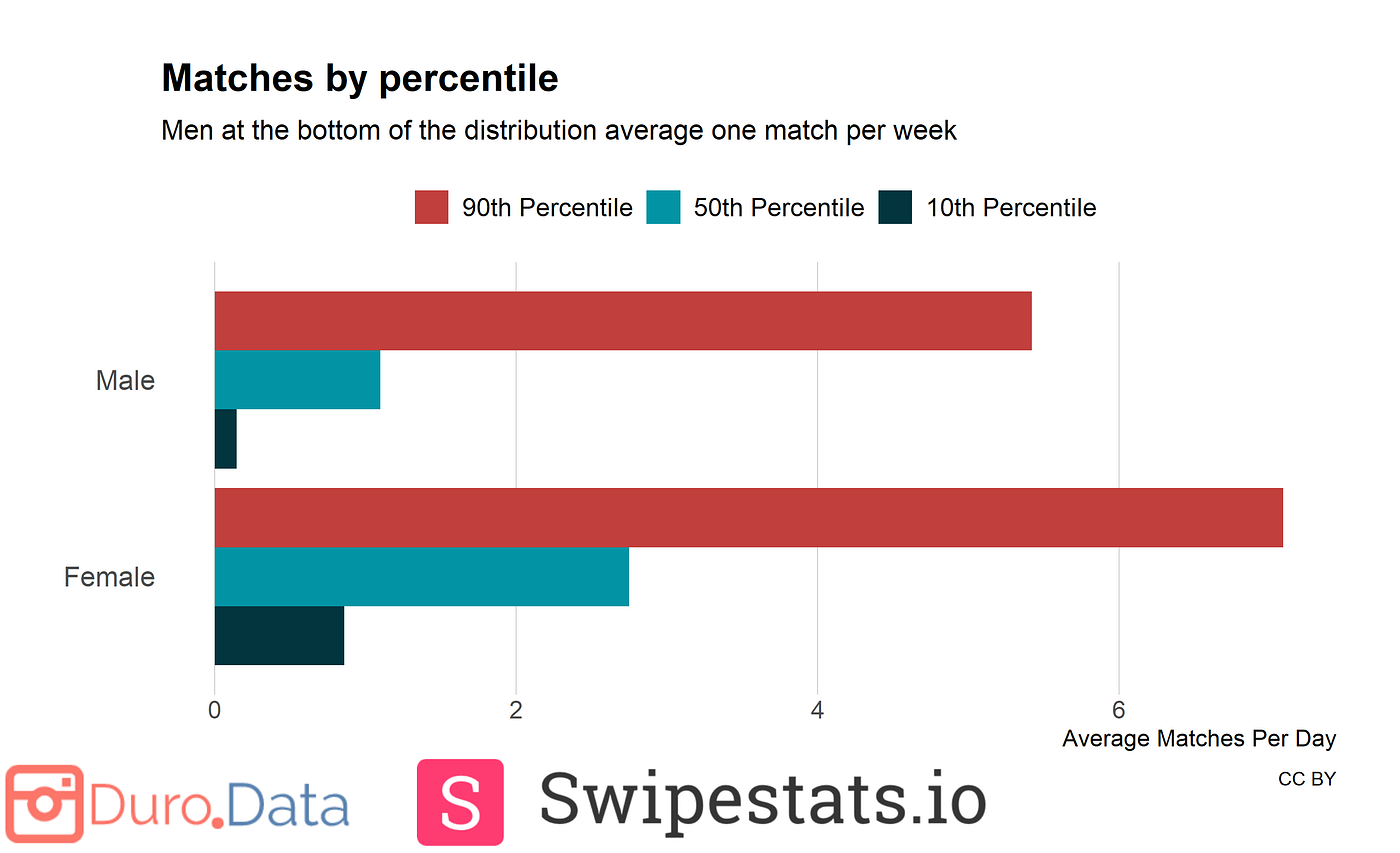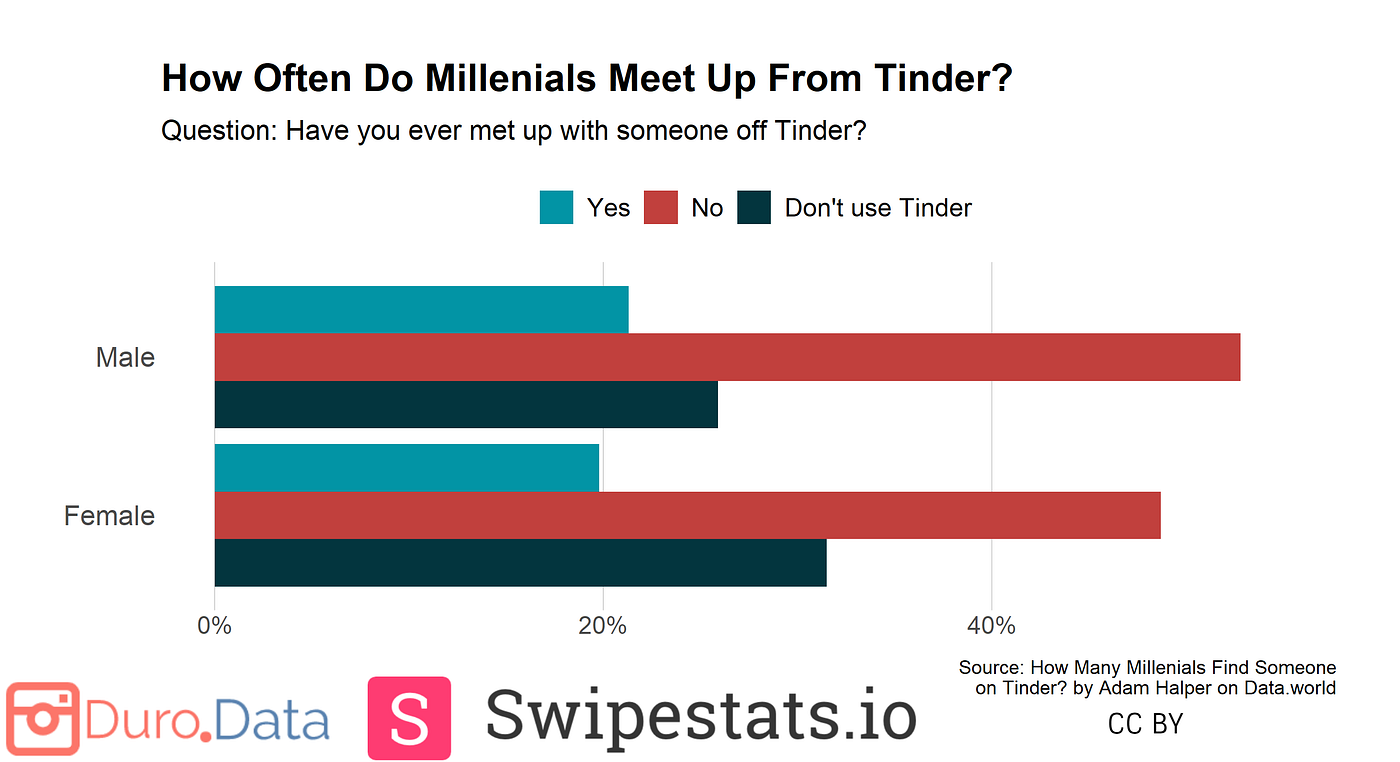Over the last decade, Tinder has redefined the online dating industry. The app has proven especially popular among young people, with three-quarters of those ages 18 to 24 reporting using the app at one point. Bumble is a distant second, with 31% of people using it.
Tinder differentiated itself through a simple swiping format since copied by numerous competitors. This format stood in stark contrast to early dating sites like eHarmony, which required long, time-consuming questionnaires that matched users based on personality compatibility. However, despite the easy and convenient allure of Tinder, getting a date through the app is notoriously exhausting.
I partnered up with Kristian Bø, who created the site Swipestats.io (which allows users to visualize their own data and compare against others) to analyze data. For this purpose, users downloaded data directly from Tinder and submitted it to us to give insight into the dynamics of the app’s dating market. Most shockingly, it shows two distinct worlds wherethe typical male user has a radically different experience from the typical female user.
Sign up for The Bold Italic newsletter to get the best of the Bay Area in your inbox every week.
While most women can easily find matches with men they’re interested in, the app presents a much more challenging environment for men. This difference is most evident in swiping patterns. While women swipe more than men overall, they are far more selective when doing so. Women swipe yes to just one in 20 people while the majority of men swipe yes more often than no.

Ultimately, most women only swipe yes on a handful of men per day while men are more freewheeling with their swipes. This creates a highly competitive environment where many men find it difficult to get matches consistently. Despite the high selectivity of female users, they actually match more often than men. The median female user receives about 2.75 matches per day while the median male user only receives about 1.1 matches.
At that rate, to expect a match, a typical woman would have to like just three men while a man would need to like over 50 women.

Of course, a match doesn’t always lead to an interaction. After matching, men message more frequently as well. The median female receives about seven messages per day while sending only five.
Why is Tinder so imbalanced?
While it has been common knowledge that women have had an easier time on the app for some time, this data provides important proof to back up the anecdotes. So why do women seem to have the upper hand on Tinder? The simplest explanation is basic supply and demand. Evidence suggests that men use dating apps more prolifically than women — both in the number of users and in the frequency of use. One estimate found that over 70% of active American Tinder users were male, and the ratio of male-to-female users among our data was similar. Taken together, this suggests a deep imbalance in the user pool of Tinder.
The result is a large number of men fighting over a comparably small pool of women, which allows women to choose potential matches very carefully.Meanwhile, men with profiles that are less attractive are left high and dry.
The data also reveals large inequalities for both genders. Men and women in the top 10% (meaning, the 10% of users who received the most matches) typically see a minimum of five matches per day, and a select few can see dozens per day. Some users went on to accumulate thousands or even tens of thousands of matches over time. The inverse of this is that while some people see a large number of matches, others see very few. Men in the bottom 10% see just one match per week at most. Success varies greatly among women as well. However, even those in the 10th percentile (meaning those who receive matches less frequently than 90% of women) can usually match about once per day.

However, a match is a far cry from a real date. Research has previously found that it requires 57 matches for one meetup and more than five times that for either a relationship or sexual encounter to occur.Accordingly, it would take a typical man almost 6,000 swipes over two nearly months to score a date.
Despite this, many men and women still find success on Tinder. According to one survey, more than 20% of millennials surveyed reported meeting someone off of Tinder. Men were more likely to use the app as well as more likely to have met someone from Tinder. Excluding those who have never used Tinder, nearly 30% of people have met someone from Tinder.

Still, the evidence is clear that men and women face much different realities on the app. While most women can get matches easily even when they are highly selective, the majority of men must temper their expectations. The data also tells us that some men will likely struggle to get a date on Tinder even after thousands of swipes and many months trying.
Co-authored by Kristian Elset Bø, who is a full stack developer and founder of Swipestats.io, which easily allows users to submit and visualize their Tinder data. If you want to know how to get your own Tinder data, see this page.
Brayden Gerrard is a writer and former data analyst who covers data-related topics.
The Bold Italic is a non-profit media organization, and we publish first-person perspectives about San Francisco and the Bay Area. Donate to us today







